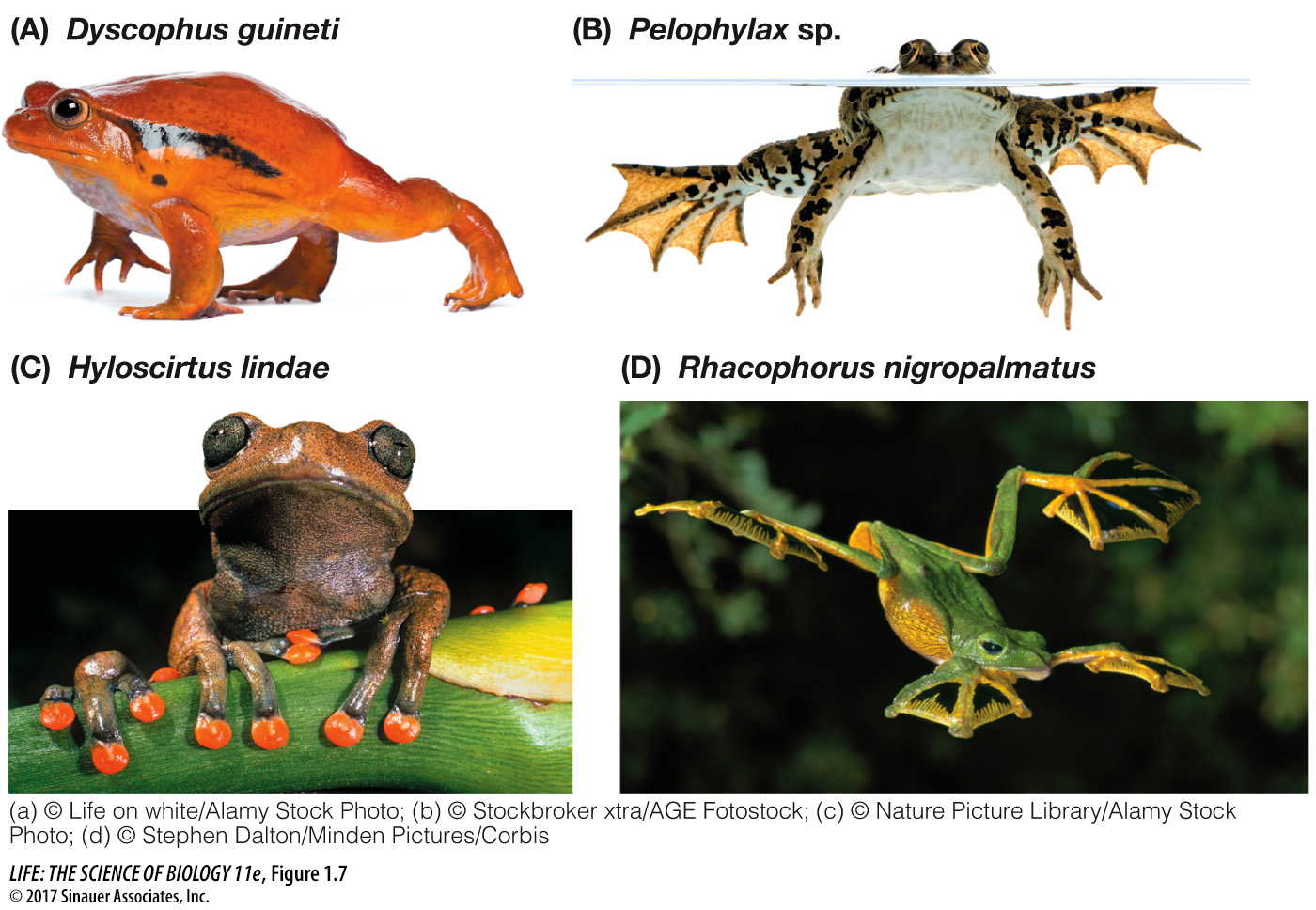Populations of all living organisms evolve
A population is a group of individuals of the same type of organism that interbreed. The processes of evolution result in changes in the genetic makeup of populations through time. Evolution is the major unifying principle of biology. Charles Darwin compiled factual evidence for evolution in his 1859 book On the Origin of Species. Darwin argued that differential survival and reproduction among individuals in a population, which he termed *natural selection, could account for much of the evolution of biodiversity.
*connect the concepts The story of Darwin’s formulation of evolution by natural selection is covered in Key Concept 20.1.
Although Darwin proposed that all organisms are descended from a common ancestor and therefore are related to one another, he did not have knowledge of the mechanisms of genetic inheritance. Even so, he understood the process of selective breeding of plants and animals to obtain breeds with desired traits. Darwin himself was a pigeon breeder and knew that he could produce pigeons with different colorations, feather patterns, or tail shapes by selecting mates (see Figure 20.5). The steps in such selective breeding can be described as follows:
Observe trait variation in a population.
Selectively breed pairs based on a desired trait to produce that trait in their offspring.
Repeat such crosses in subsequent generations to amplify the trait.
Darwin realized that if humans could select for specific traits in domesticated plants and animals, the same process could operate in nature; hence the term “natural selection” as opposed to artificial (human-
Because organisms with certain traits survive and reproduce best under specific sets of conditions, natural selection leads to adaptations: structural, physiological, or behavioral traits that enhance an organism’s chances of survival and reproduction in its environment (Figure 1.7). The opening story of this chapter described experiments aimed at understanding adaptations that might enable corals to survive in a warmer environment. In addition to natural selection, evolutionary processes such as sexual selection (selection due to mate choice) and genetic drift (the random fluctuation of gene frequencies in a population due to chance events) contribute to biodiversity. These processes operating over evolutionary history have contributed to the remarkable diversity of life on Earth. Part Six describes how natural selection and other evolutionary processes are supported and explained by the massive body of genetic and molecular genetic knowledge mostly produced over the past hundred years.

Over most of the history of biology, the diversity of life was described and catalogued based on structural characteristics of organisms. With the rapid development of molecular genetic tools in recent years, it is now possible to obtain the DNA sequences of parts or all of the genomes of organisms. Now it is possible to compare organisms on the basis of their DNA blueprints, which has given rise to the field of genomics. For example, a structural feature that differentiates humans with African or European origins versus East Asian origins is hair. Europeans have fine hair that can be curly, as is the hair of Africans. East Asians have thick hair that is straight. This difference is due to a gene called EDAR and to a single nucleotide substitution in that gene resulting in a single amino acid change in the protein product of that gene (Figure 1.8).

The ability to sequence the billions of letters in genetic codes generates enormous amounts of data, and to manage and analyze that data, the field of bioinformatics has grown in parallel with genomics. Genomics has enormous applications throughout biology, from evolutionary studies to investigations of human health. Advances in genomics and bioinformatics make current initiatives in precision medicine possible.